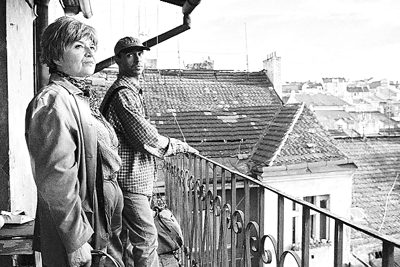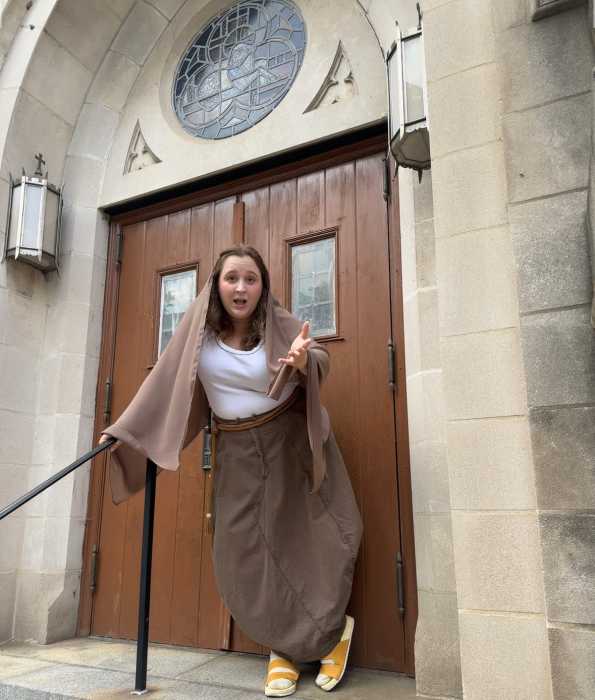Immigration and xenophobia are metaphors for life’s brutal interconnectedness
“Up and Down” has no real protagonist. Instead, it features a dozen characters whose lives intersect in startling ways. Small, seemingly insignificant acts, like the disappearance of a wallet, have spiraling consequences.
Presenting a panoramic view of urban life is as important as storytelling. If you’ve spent much time at art houses over the past 15 years, this might sound familiar.
“Up and Down” adopts a formula, inspired by Robert Altman––especially in “Short Cuts”––and by Krzyzstof Kieslowksi, and used by filmmakers around the world. In the hands of directors as talented as Paul Thomas Anderson and Michael Haneke, the approach still has some life, but its efficacy is on the wane.
Known for lightly comic period pieces, such as “Divided We Fall,” released in the U. S. in 2001, Jan Hrebejk has now made a film that attempts to take the pulse of present-day Prague but winds up feeling mostly generic.
“Up and Down” begins near the Czech-Slovak border. Passing easily into the Czech Republic, two smugglers free their cargo of illegal Indian immigrants but later discover that a woman has left her baby behind. Meanwhile, Mila (Natasa Burger) and Frantisek (Jiri Machacek) would like to have a child, but she is infertile and his criminal record––from soccer hooliganism––prevents them from adopting. Going to a pawnshop that fronts for an assortment of criminal activities, Mila buys the lost baby. Professor Otakar (Jan Triska) collapses during one of his classes. His son Martin (Petr Forman), who now lives in Brisbane, Australia, returns home to see his ailing father, mother Vera (Emilia Vasaryova) and Otakar’s much younger girlfriend Hana (Ingrid Timkova), a worker in a refugee aid center.
Frustratingly, Hrebejk allows moments of emotional truth to nestle side by side with cheap ironies and easy contradictions. Given the barrage of racist and xenophobic sentiments expressed by several characters, it’s not surprising to learn, when Hana finds herself under pressure, that she shares those feelings. Learning the fate of that missing wallet, meanwhile, proves to be an anticlimax.
When he is at his best, Hrebejk has the patience to let scenes play out long enough to descend believably from politeness into tension and anger. Two set pieces––one involving a family dinner and the other a confrontation between Frantisek and a thuggish friend––are genuinely uncomfortable viewing, although the film elsewhere is quite funny. Screenwriter Petr Jarchovsky has a knack for developing characters by giving them memorable anecdotes.
Much like the script, the look of “Up and Down” is a mixed bag. Cinematographer Jan Malir uses filters to distort colors. When the film leans towards kitchen-sink naturalism, that kitchen glows green or yellow. Certain places are color-coded. Brisbane is depicted in such bright yellow that the color practically bleeds off the screen, as if it were drying ink.
On the other hand, the Prague of Otakar’s family is pale and washed-out, with vast stretches of white in the background. Malir’s work is appealing, but its use feels terribly schematic and faintly patronizing. Hrebejk apparently thinks spectators need markers to tell the difference between Australia and the Czech Republic.
When Otakar collapses, he’s in the midst of a lecture about immigration. Xenophobia winds up being the link that most frequently ties disparate characters together. In this, “Up and Down” feels more West European than Eastern, despite many references to the communist past. The story ultimately suggests that one has to leave the continent to escape from ethnic hate, but the treatment of this subject is pretty heavy-handed, unfortunately not immune from occasional lapses into stereotyping, as when a Burmese refugee scares away muggers by demonstrating his karate moves. One hopes that this is a self-conscious joke.
Perhaps the formula “Up and Down” follows is particularly suited to the era of globalization and widespread immigration, but in the end the film doesn’t have anything particularly profound to say about these subjects. Pretty colors and a few laughs aside, it feels like a watered-down retread of Haneke’s “Code Unknown.” It’s a small world after all, and doing justice to it requires more imagination than this film has.
gaycitynews.com



































